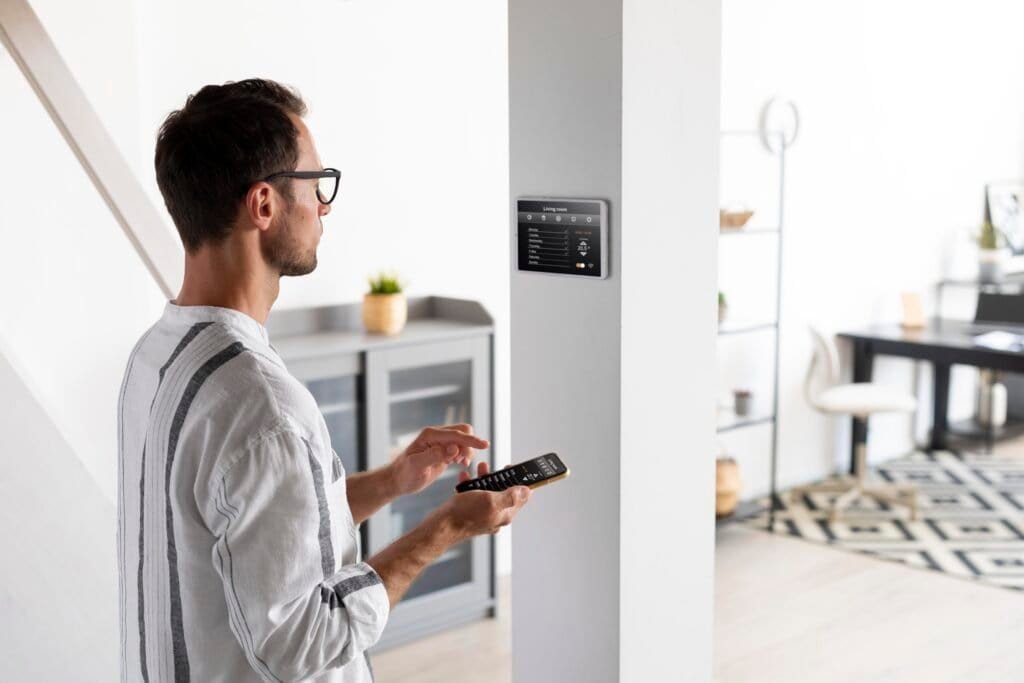
In today’s tech-savvy world, homeowners are constantly looking for ways to reduce energy costs while enhancing comfort. One of the most effective upgrades you can make is a Smart Thermostat Installation. Whether you’re new to smart home technology or looking to upgrade your current system, this modern addition offers unmatched convenience, energy savings, and advanced features that adapt to your lifestyle.
The Benefits of Smart Thermostat Installation
A Smart Thermostat Installation allows you to control your home’s temperature remotely through your smartphone or voice assistant. These systems learn your schedule and preferences, automatically adjusting to ensure optimal comfort and efficiency. The ability to monitor and adjust settings on the go helps eliminate unnecessary heating or cooling, translating into lower energy bills.
Homeowners are increasingly choosing energy-efficient thermostats because of the long-term savings they offer. Unlike traditional models, smart thermostats optimize energy usage by analyzing data, adapting to your habits, and even considering local weather patterns.
How Smart Thermostats Work
At the heart of every Smart Thermostat Installation is advanced technology that combines Wi-Fi connectivity, sensors, and machine learning. Once installed, the thermostat begins to learn your schedule—when you wake up, leave for work, return home, and go to bed. Over time, it creates a customized heating and cooling schedule that balances comfort and efficiency.
Some models also integrate with other smart home devices to create a smart home climate control ecosystem. For instance, your thermostat can coordinate with your smart blinds and fans to regulate indoor temperature more effectively.
Energy Savings and Cost Efficiency
Perhaps the biggest advantage of Smart Thermostat Installation is its potential for substantial energy savings. According to the U.S. Department of Energy, homeowners can save up to 10% a year on heating and cooling by using a programmable thermostat. Smart thermostats go a step further by adjusting automatically and sending alerts for system maintenance or extreme temperature changes.
These energy-efficient thermostats often come with energy usage reports, helping you identify trends and make more informed decisions. Some utility companies even offer rebates for installing approved smart thermostats, making the switch more affordable.
Easy Integration with Smart Home Systems
A well-planned Smart Thermostat Installation fits seamlessly into your existing smart home setup. Compatible with systems like Google Home, Amazon Alexa, and Apple HomeKit, smart thermostats offer voice control capabilities and enhanced automation.
Integrating a smart home climate control solution adds value to your home while increasing daily convenience. For example, you can set geofencing so your thermostat knows when you’re on your way home and adjusts the temperature accordingly, ensuring a perfect environment the moment you walk in.
Professional Installation vs. DIY
While many homeowners are tempted to tackle Smart Thermostat Installation as a DIY project, professional installation ensures optimal performance and safety. A certified technician will handle wiring, test the HVAC system, and configure your thermostat correctly for your home’s layout and needs.
Improper installation can result in inefficiency, reduced lifespan of your HVAC system, or even void warranties. That’s why it’s worth consulting an expert who can recommend the best energy-efficient thermostat for your space and handle the setup process smoothly.
Common Features to Look For
When shopping for a thermostat, the features you choose will influence the overall performance of your Smart Thermostat Installation. Some key features to consider include:
- Learning capabilities that adapt to your schedule
- Remote access via mobile apps
- Voice assistant compatibility
- Real-time energy consumption data
- Integration with other smart home climate control devices
Opting for a model that includes these features not only improves energy efficiency but also enhances the user experience.
Maintenance and Troubleshooting
After a successful Smart Thermostat Installation, it’s important to perform regular updates and occasional maintenance. Software updates usually occur automatically, but it’s a good idea to check for compatibility issues whenever you install new smart home devices.
Most energy-efficient thermostats also provide system alerts and diagnostics that help identify problems early. This proactive approach can prevent costly repairs and ensure consistent performance year-round.
Long-Term ROI of Smart Thermostats
Though the upfront cost of Smart Thermostat Installation may be higher than traditional options, the return on investment is clear. Reduced energy consumption, increased HVAC longevity, and eligibility for rebates or incentives all contribute to significant savings over time.
As more homeowners prioritize sustainable living, installing a smart home climate control system becomes not just a trend, but a smart long-term decision. The value added to your property and the peace of mind from better control and monitoring make the initial investment worthwhile.
Final Thoughts
Whether you’re interested in saving money, enhancing convenience, or boosting your home’s value, Smart Thermostat Installation is a smart move. These systems offer the modern homeowner the perfect blend of technology, efficiency, and comfort. With the right model and a professional installation, you’ll be enjoying a more connected and energy-conscious lifestyle in no time.
For those looking to make their homes greener and smarter, upgrading to an energy-efficient thermostat is a great first step. Combine it with other smart home climate control solutions for maximum benefit and ease of use.
